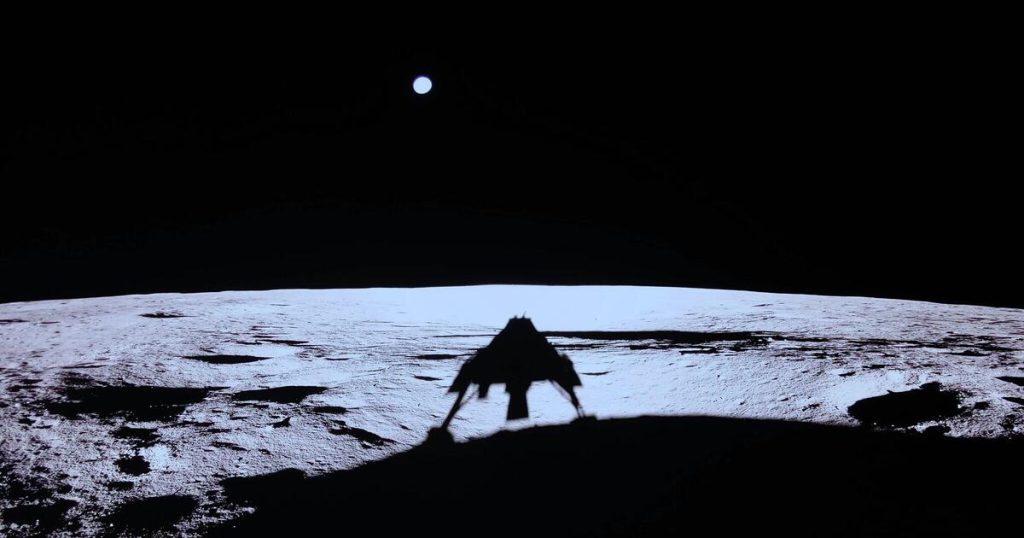In a historic achievement for commercial space exploration, Firefly Aerospace’s “Blue Ghost” lander has successfully completed the first fully successful moon landing conducted by a privately operated robotic spacecraft. The landing, which occurred in the Mare Crisium (Sea of Crises) region, demonstrates significant technological advancements in space exploration and the potential for commercial enterprises to contribute to lunar science. This monumental event underscores a new era in lunar exploration, paving the way for future missions with commercial involvement.
| Article Subheadings |
|---|
| 1) Overview of the Landing Event |
| 2) Technical Details of the Lander |
| 3) Reaction from the Firefly Team |
| 4) NASA’s Commercial Lunar Payload Services Program |
| 5) Future Implications for Commercial Lunar Exploration |
Overview of the Landing Event
The “Blue Ghost” lander successfully descended from a lunar orbit at a height of 62 miles. At precisely 2:31 a.m. EST, the lander fired its main engine, marking the beginning of a 63-minute descent toward the lunar surface. This descent culminated in a touchdown at the Mare Crisium, a sea on the moon recognized for its historical significance. The successful landing represents a pivotal moment in commercial space history, as it is the first instance of a privately built and operated spacecraft landing on the moon. The significance of this mission extends beyond mere achievement; it symbolizes the capability of commercial entities to foster advancements in space exploration.
Technical Details of the Lander
The “Blue Ghost” lander stands at 6.6 feet tall and employs a combination of its main engine and eight smaller reaction control system (RCS) thrusters to enable a controlled descent. During its descent, the vehicle slowed from approximately 3,800 mph to a mere 90 mph, meticulously maneuvering into its final landing position above the site. Prior to touchdown, the lander autonomously analyzed the lunar terrain for obstacles such as boulders and slopes to ensure a safe landing. The last segment of the descent involved utilizing the RCS jets to independently control speed and orientation, bringing the craft down to a gentle speed of merely 2.2 mph within the last 30 feet. This comprehensive technical proficiency highlights the advancements made in lunar landing technologies.
Reaction from the Firefly Team
As the Blue Ghost neared its destination, staff members, affectionately dubbed “Fireflies,” gathered in mission control located in Austin, Texas. Tension filled the air as telemetry streamed updates, culminating in a triumphant moment of silence followed by ecstatic cheers once the lander achieved contact with the moon’s surface. Officials celebrated the success, prompting emotional remarks from key personnel, including the chief engineer, Will Coogan, who enthusiastically proclaimed, “You all stuck the landing! We’re on the moon!” Such joyful reactions encapsulate the dedication and effort the Firefly team invested in making this mission a success.
NASA’s Commercial Lunar Payload Services Program
The successful landing of the Blue Ghost is intrinsically linked to NASA’s Commercial Lunar Payload Services (CLPS) initiative, which aims to promote collaboration between public agencies and private enterprises in lunar exploration. NASA has entered into a contract valued at $101 million with Firefly Aerospace to carry ten NASA-sponsored scientific instruments to the lunar surface. This partnership illustrates NASA’s updated strategy to utilize commercial companies to facilitate science and technology demonstrations, paving the way for future manned missions to the moon and further exploration in the coming years. Such collaborations are fundamental in advancing scientific knowledge and ensuring safety for astronauts while operating on the lunar surface.
Future Implications for Commercial Lunar Exploration
The accomplishment of the Blue Ghost mission holds significant implications for the future of commercial lunar exploration. Firefly’s initiatives reflect growing opportunities for private enterprises in space. The company has ambitions beyond just one successful mission. It holds several contracts under the CLPS initiative that includes a second flight to the moon planned for 2026. This future mission aims to explore new lunar territories, such as the moon’s far side, and will involve innovative technologies to expand human understanding of the lunar environment. As the commercial space sector continues to evolve, leaders within the industry advocate for sustainable operations that can support long-term exploration goals, including future manned missions to Mars.
| No. | Key Points |
|---|---|
| 1 | Firefly Aerospace’s “Blue Ghost” achieved the first successful moon landing by a commercial spacecraft. |
| 2 | The landing took place in the Mare Crisium region, showcasing new lunar landing capabilities. |
| 3 | The mission received significant support and funding through NASA’s Commercial Lunar Payload Services initiative. |
| 4 | The Blue Ghost lander is set to carry out ten NASA-sponsored experiments on the lunar surface. |
| 5 | Firefly has plans for future missions, highlighting the growing role of commercial entities in space exploration. |
Summary
The successful landing of the Blue Ghost lander marks a watershed moment in the evolution of commercial space exploration, showcasing the capabilities of private companies to conduct complex lunar missions. Through innovative technology and strategic partnerships with NASA, Firefly Aerospace has positioned itself at the forefront of a new era in space exploration. This accomplishment not only emphasizes the potential for future collaborative endeavors but also lays the groundwork for advancements in both lunar and deep-space exploration efforts.
Frequently Asked Questions
Question: What is the significance of the Blue Ghost’s landing?
The landing of the Blue Ghost is noteworthy as it is the first fully successful moon landing by a commercial spacecraft, showcasing the growing capabilities of private companies in space exploration.
Question: How did Firefly Aerospace achieve this landing?
Firefly Aerospace utilized advanced technology, including a combination of a primary engine and reaction control thrusters, to ensure a controlled descent and landing on the lunar surface.
Question: What role does NASA play in this mission?
NASA provided significant financial support through its Commercial Lunar Payload Services program, which aims to facilitate partnerships with private companies for lunar exploration and scientific research.
